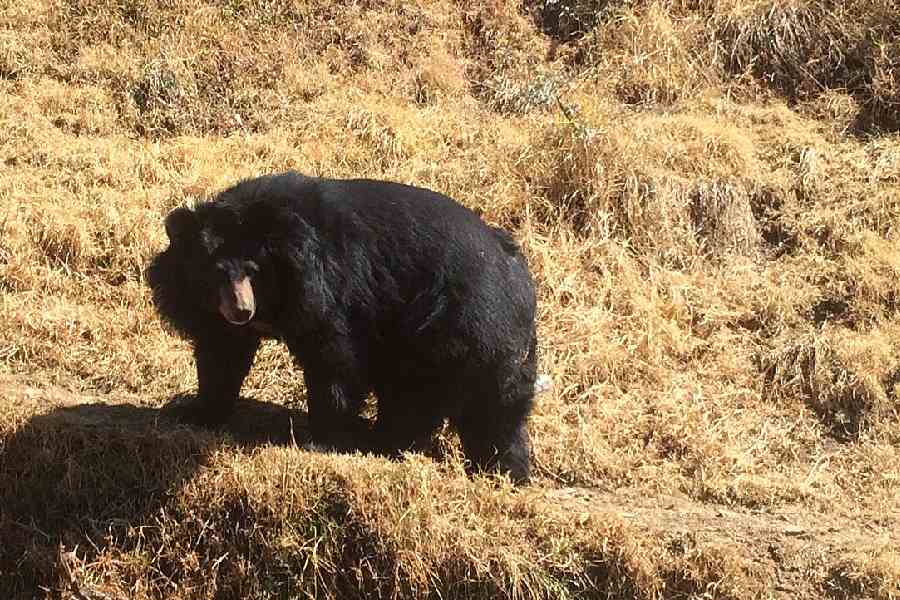A global study has revealed wolf DNA in two-thirds of modern dog breeds and all free-living stray village dogs sampled, evidence for widespread wolf-dog interbreeding long after the species split between 20,000 and 40,000 years ago.
The study has also suggested that wolf DNA might have shaped dogs’ size, sense of smell, and personality. High-wolf-content dogs, for instance, appear more suspicious of strangers and territorial, while low wolf-content dogs appear easier to train and friendlier.
US researchers who analysed 2,693 previously catalogued dog and wolf genomes found that 1,019 or 64.1 per cent of modern breed dogs and 100 per cent of 280 village dogs carry wolf ancestry. Their findings were published in the Proceedings of the National Academy of Sciences on Monday.
The 280 genomes of village dogs came from over 20 countries, across Eurasia and Africa, and included six from India.
Earlier genomic studies have indicated a long history of reproductive isolation, with dogs receiving little genetic input from wolves since domestication, apart from a few notable exceptions, including cases of human-driven intentional wolf-dog inbreeding.
“The surprise for me was how widespread the signal for ancient gene flow seems to be,” Logan Kistler, curator of archaeogenomics at the US National Museum of Natural History and the study’s co-author, told The Telegraph via email.
“The novel finding is that a large proportion of dog genomes contain small fractions of wolf DNA,” Kistler said. “This is evidence for dogs and wolves interbreeding only a couple of thousand years ago — the signal is subtle and hasn’t been seen before.”
The study has expectedly found the highest fraction of wolf DNA — 23 to 40 per cent — in the genomes of the Czechoslovakian and Saarloos wolfdogs that were purposefully bred in Europe through wolf-dog interbreeding during the 20th century.
The presence of wolf ancestry crosscuts all sizes of dogs, including the tiny chihuahua, whose genome has 0.2 per cent wolf DNA. But larger breeds tend to have a larger overall proportion of wolf ancestry, the researchers said.
The Arctic sled dogs, pariah breeds and hunting dogs have the greatest wolf ancestry, while on average, terriers, gundogs and scent hounds have the least. Livestock-protecting breeds, such as Central Asian herder dogs, the Anatolian shepherd, Caucasian ovcharka, Turkish mastiff and the Mongolian bankhar, contain 0.55 to 1.19 per cent wolf ancestry.
While some large guardian dogs have high wolf ancestry, others such as the bullmastiff and the St Bernard’s have no detectable wolf ancestry.
“Prior to this study, the leading science suggested that for a dog to be a dog, there can’t be very much wolf DNA present,” Audrey Lin, a computational biologist and study’s co-author, said in a media release from the museum. “But if you look closely in modern dog genomes, the wolf is there.”
The study has also noted connections between wolf ancestry and personality traits attributed to dogs by kennel clubs. For instance, low wolf ancestry breeds are described as easy to train, eager to please, friendly and affectionate, while high wolf ancestry dogs are described as suspicious of strangers, alert, loyal, reserved, or territorial.
“We cannot know with this data if any wolf ancestry is responsible for any personality traits or other behaviours,” Kistler said. “We see correlations, but more study is needed to understand how and if wolf DNA is actually linked with any modern biological traits in dogs.”
Anindita Bhadra, a dog behaviour specialist at the Indian Institute of Science Education and Research, Calcutta, said the attempt to explore connections between personality types and wolf ancestry was “the most interesting finding” from the study.
“If we do similar analyses on free-ranging dog populations in India, it is possible we might find genetic admixtures with jackals too,” Bhadra said.
The study has also shown that wolf ancestry overlaps with genetic machinery for olfactory receptors in free-living village dogs, suggesting that the wolf-to-dog gene flow has enhanced the sense of smell in village dogs. A Tibetan wolf-like gene helps Tibetan mastiffs tolerate low-oxygen conditions in the Himalayas and the Tibetan plateau.
Kistler said it seems likely that dogs use wolf genes as part of a toolkit to meet the challenges they encounter when they live with humans, whether surviving at high altitudes or searching for food as they roam about villages or protecting the herd.











